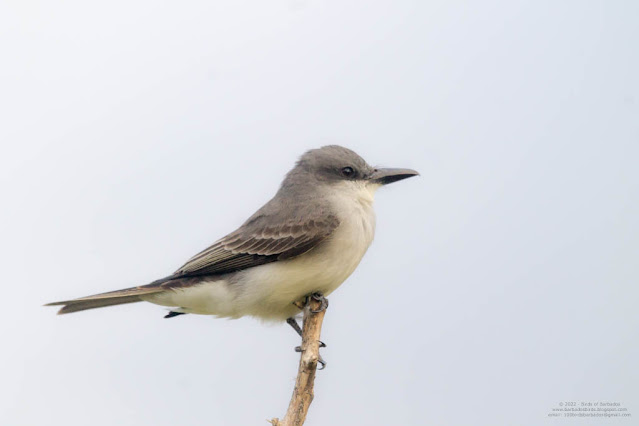Other Names: Rainbird, Dr. Morris Bird, Pee-whittler; Length:18-21"(45.72-53.34 cm); Habitat: One of the most adaptable birds on the island strives in various habitats, the most likely bird to find on the powerlines, Nocturnal - seen around streetlights at night; Wetlands - around ponds hawking and skimming for insects; Statue: Resident Breeder, widely disturbed; Conservation status: Least Concern
A Large flycatcher, 8.5-10 inches, with Grey Upperparts, with brownish wings and tail
white underparts
A White throat and undertail
Black bill and legs
A grey crown with a concealed yellow crown stripe, dusky mask through the eyes, long black bill Omnivore: feed on insects, lizards and other reptiles, small mammals, also seeds and berries.
These birds aggressively defend their territory against intruders, big or small
 |
| Grey Kingbird vs much large Osprey |
Grey Kingbird vs juvenile Black-crowned Night Heron

































